Attractions in Mexico
14.01.2019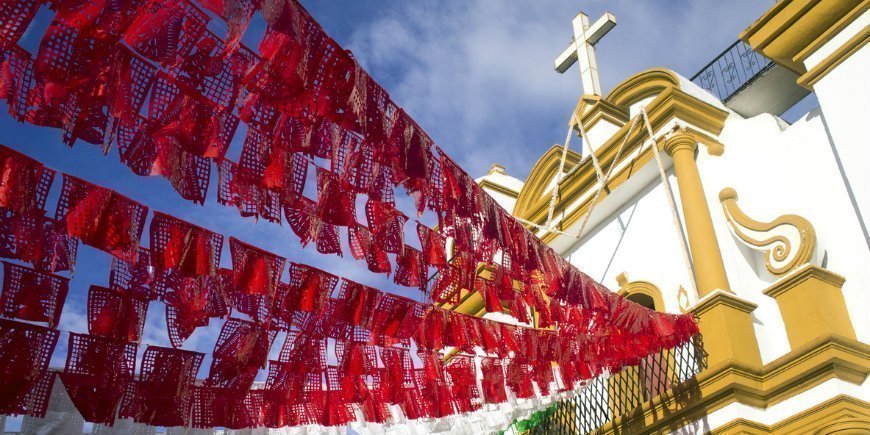
Mexico abounds with all manner of attractions.
On your holiday you can, for example, visit vast metropolises with wonderful museums and restaurants, or explore the array of Mayan Indian ruins. If you’re into outstanding nature, there’s plenty to be found in the lush Chiapas mountains, and the Yucatan Peninsula also offers unique landscapes.
Read on to find out what it is that makes Mexico such a great travel destination.
Chichen Itza: a legacy of the Mayan heyday
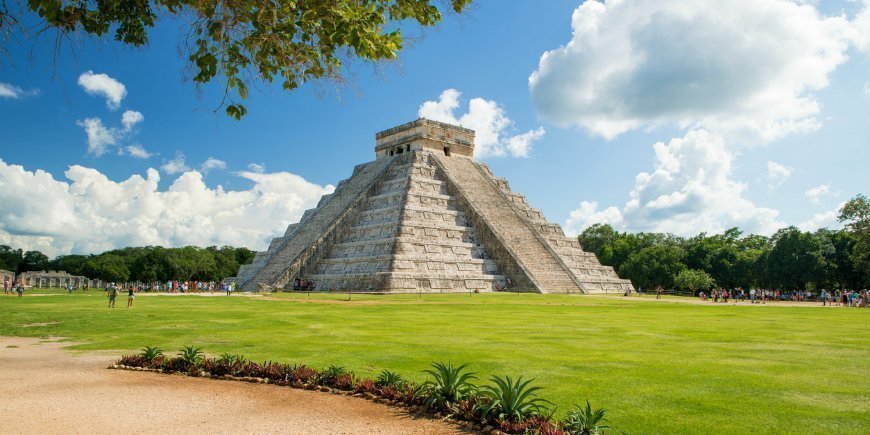
Chichen Itza is one of Mexico’s main attractions.
This archaeological site on the Yucatan Peninsula holds a wealth of tales about the Mayan and Itza Indians’ sacrifices to the gods, lethal ball games and sacred buildings. However, the highlight of your visit will undoubtedly be the El Castillo pyramid, a Maya calendar made of stone.
The El Castillo pyramid was built in honour of the Maya deity, Kukulkan, and has 91 steps on each of the four sides. If you put them together with the platform at the top, you get 365 steps in total – one for each day of the year.
According to the Mayan faith, the deity Kukulkan was a feathered serpent and is represented at the foot of the pyramid’s northern staircase, where two serpent heads protrude. Every year at the spring and autumn equinox, the sun casts shadows on the sides of the pyramid, creating the illusion of a serpent winding its way down the north staircase and culminating in the beautifully-formed serpent heads.
Here, you get a real sense of the Mayans’ vast understanding of the universe around them.
You can also see Cenote Sagrado, the sacred well where the Mayans believed their water god lived, and the large Maya ball court. The Mayans’ ball games are said to have ended in human sacrifices, and images of these sacrifices were carved into stones, adorning the sides of the court.
Mexico City: A capital with something for everyone
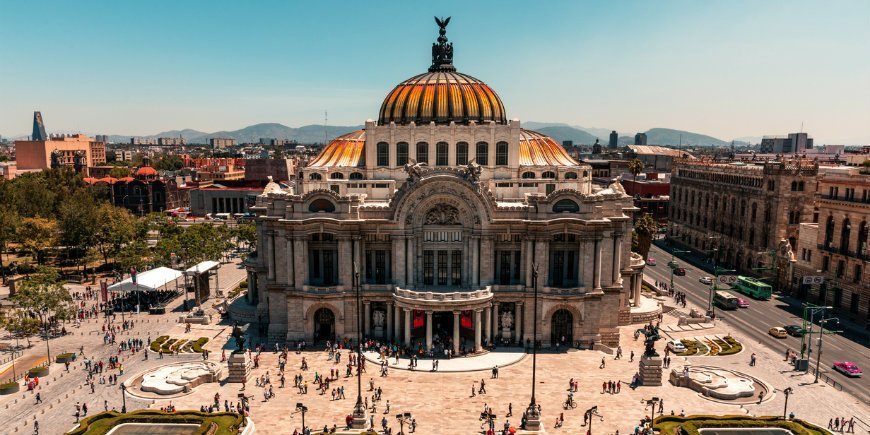
Home to more than 21 million inhabitants, Mexico City is the largest city in the western hemisphere.
Despite its size, however, it is a truly fascinating and charming city with many museums, beautiful churches and fantastic dining experiences.
Visit the unique Palacio de Bellas Artes, which is built in white marble and serves as an art exhibition venue and concert hall for Mexican artists. If you’re in the mood for more art, you should visit the home of the iconic artist Frida Kahlo, which has now been converted into a museum. In her beautiful blue house, you can see a colourful selection of the works of Kahlo and other Mexican artists.
A visit to Mexico City is not complete without exploring the city’s culinary universe. Everywhere you go, you will find small restaurants, or cantinas as they are also called, serving delicious Mexican specialities such as tacos al pastor, quesadillas and exquisite enchiladas.
Just a few hundred metres from Palacio de Bellas Artes, you will find the café, El Moro, which is famous for making Mexico City’s best churros. We’ve tested them and can only agree!
Teotihuacan: A Mesoamerican metropolis
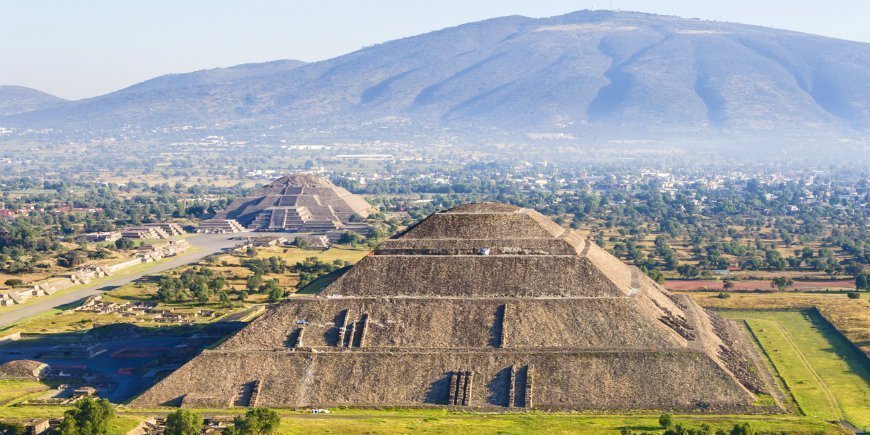
Teotihuacan is located roughly an hour’s drive from Mexico City, and with its two large pyramids, it is today considered one of the world’s most important archaeological sites.
Teotihuacan is shrouded in mystery, and no one knows who actually built the huge complex. However, the pyramids and surrounding ruins are thought to have existed for several centuries BC.
Teotihuacan had its heyday with the Aztecs between the first and seventh centuries and was one of the world’s largest cities during this period – larger than Rome back in the day. The site was also named by the Aztecs, who discovered the abandoned city, and translated, Teotihuacan means “Place of the Gods”. Since then, Teotihuacan has been home to several of the ancient Mesoamerican peoples, including the Aztecs, the Mayans, the Mixtecs and the Zapotecs.
On your visit to the ruin complex, you can climb the two majestic pyramids. One was built in honour of the sun and the other in honour of the moon. In addition, you can explore the smaller buildings found along Calzada de los Muertos, which means “Avenue of the Dead”.
Tulum: The Mayans’ ancient trading town
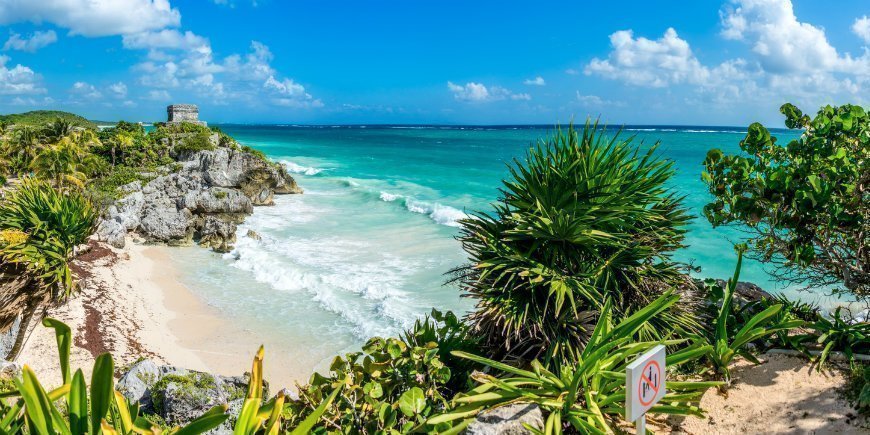
Tulum is a veritable paradise on earth.
The cosy coastal town, a few hours south of Cancún, is located by the Caribbean Sea, where everything takes place at a calm pace, creating the most wonderful holiday atmosphere. Enjoy your stay at Hip Hotel, which is practically on the beach. Hang out in the hammock on the room’s terrace or make use of the sun loungers down by the water’s edge and the azure sea.
The most ideal way of getting around Tulum is by bike or on foot. And this is also what helps create the chilled atmosphere, and you can nurture your soul with a stress-relieving stroll along the fine, white sand of the beach to the sound of the lapping waves.
Tulum is also home to some of the world-famous Mayan ruins. Tulum was built as far back as the 13th century and is the only Mayan city on the coast. An almost 800-metre-long wall has been built around the town to protect it. The name Tulum also means “wall” in the ancient Yucatec language.
The ruins of the wall and the ruins of the 7.5-metre-high temple pyramid, El Castillo, still stand on the rocks overlooking the blue sea. You can easily while away a few hours here.
World-class beaches

Mexico’s east coast on the Yucatan Peninsula borders the Caribbean Sea, and you are guaranteed some outstanding beach experiences here.
In addition to Tulum’s lovely atmosphere and impressive ruins, the town has become known for its wonderful beaches in recent years. Here, you will experience relaxation of the highest order. Head off on adventure in the fantastic blue sea, where you can, for example, snorkel and see the many colourful fish that live here.
Where Tulum exudes peace and relaxation, there is a little more go in the streets of Playa del Carmen. Enjoy the lapping of the waves from a sun lounger on the fine white sand with an ice-cold drink in your hand, or explore Avenida 5, which is lined with lively bars, lovely shops and a host of different street artists. You will definitely not be bored here!
The island of Cozumel off the coast of Playa del Carmen is a paradise for scuba divers and snorkelers. The entire island is surrounded by fascinating coral reefs that are part of the Mesoamerican Barrier Reef system. Swim in the clear water among colourful corals, fish, starfish and sea turtles. Once you’ve see the bustling world beneath the ocean surface on Cozumel, it’s an experience you’ll never forget.
Oaxaca: a pot of colour and taste
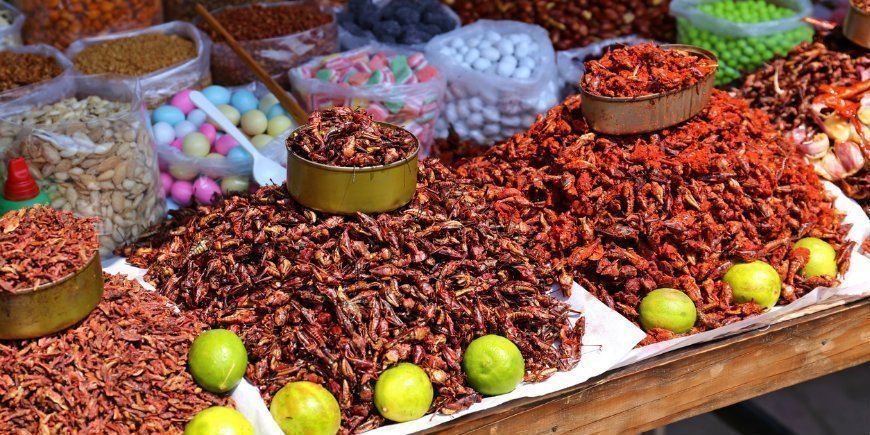
The city of Oaxaca is located in a valley surrounded by mountains in southern Mexico.
On the central square, you will find the large Templo de Santo Domingo, a more than 400-year-old church, the walls, ceilings and impressive altars of which are adorned with the purest gold.
Oaxaca is also known as Mexico’s foodie city due to the amazing mix of pre-Columbian and Spanish-inspired cuisine found here. Taste the Mexican specialities, such as the many different kinds of mole, a traditional Mexican spicy sauce often served with meat and rice. This amazing food culture is one of the reasons you should visit Oaxaca.
The city is also brimming with cosy parks, open spaces and museums. Go for a walk in the historic district, where the streets are cobblestoned, and the buildings on either side are painted in all manner of colours. Time flies when exploring this colourful neighbourhood.
If you simply can’t get enough of ancient ruins, the vast Mesoamerican ruin city, Monte Alban, is set on a mountain top overlooking Oaxaca city. The interesting thing about Monte Alban is that the ancient Zapotecs, who built the site, spent hundreds of years flattening the mountain top before they could start building the many pyramids, temples and tombs.
Cenotes: The underground world of the Yucatans
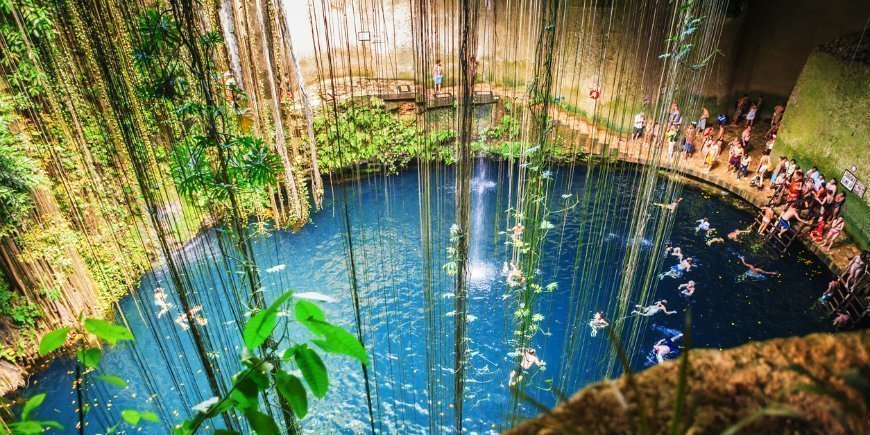
The Yucatan Peninsula in Mexico is relatively flat and has no rivers or streams on the surface. However, miles and miles of freshwater streams flow underground. Technically speaking, a cenote is an underground pocket of freshwater from these freshwater streams, where the roof of the natural cave has completely or partially collapsed, forming an underground pool of freshwater.
It’s like heading down into a magical, underground world the first time you crawl down through the opening of one of Yucatan’s many cenotes. The Mayan also believed that cenotes were openings to the underworld and they were therefore considered to be sacred.
And what a sight that greets you! The water is completely clear and wonderfully blue.
It is relatively dark in some of the cenotes, illuminated only by the few rays of sun that shine through the holes up to the surface. In some places, plants hang down from the opening, while elsewhere, numerous stalactites have formed. All of this helps give the cenotes their unique atmosphere.
The water is cool and refreshing to swim in, and it can be quite deep in some places. If you’re a good swimmer, we recommend bringing a diving mask with you and diving down to the bottom to see the cenote from an angle only experienced by very few.
Agua Azul and Misol-Há: The beauties of the Chiapas Mountains
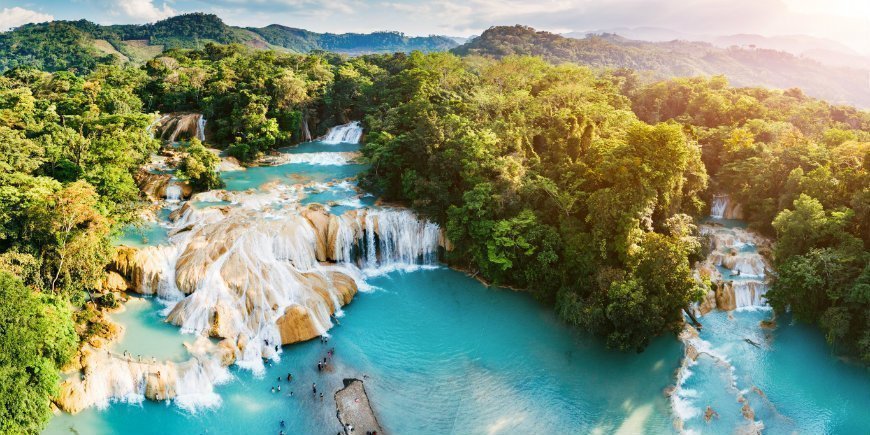
In the Chiapas Mountains in southern Mexico, one nature experience after another awaits you. Some of the most beautiful are the Agua Azul and Misol-Há waterfalls.
Agua Azul means blue water, and the many waterfalls, large and small, are the most stunning blue/turquoise colour. The water, which runs down the mountainside, is rich in minerals which help create the blue colour. The minerals also mean that the mountainside has become covered by a thick layer of limestone over time, forming a large number of small pools from which the water falls. If you visit Agua Azul during the dry season in April–May, you have the best chance of experiencing the clear blue colour of the water, as the concentration of minerals is highest in these months.
Another wonderful nature experience is the Misol-Há waterfall. Misol-Há is located in the heart of the jungle approximately 20–30 km from Palenque. At the foot of the 35-metre-high waterfall is a refreshing pool, perfect for a dip. Behind the waterfall, there is a 20-metre-deep cave from which you can see the stunning waterfall from a completely different angle.
Día de los Muertos – Day of the Dead
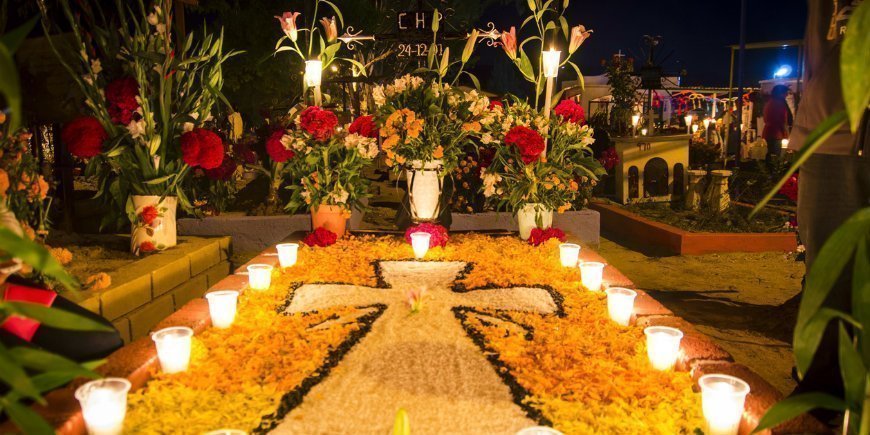
Although Día de los Muertos is not a physical attraction, the day – The Day of the Dead – is definitely an interesting experience.
On Día de los Muertos, the Mexicans celebrate the dead. And Dia de los Muertos is not a sad day, as you might expect, but a day full of celebrations and the joy of life.
The tradition is several thousand years old and began with the ancient Aztecs, Toltecs and other indigenous tribes. It was believed that the deceased were still part of society and that their spirit was kept alive through memories. Once a year in early November, the dead could temporarily visit the Earth and their families again.
The day is celebrated all over Mexico with major festivities in the central squares. Experience, for example, the big party in Mexico City, when parades and loud music fill the streets. The streets are adorned with traditional Mexican garlands, flowers and an array of colourful sugar skulls. In the homes of the locals, an impressive ofrenda is decorated with photos of the family’s dead, flowers and candles.
Today, Dia de los Muertos is a good blend of ancient traditions and the newer Catholic traditions.
Palenque: An unexplored gem in the jungle
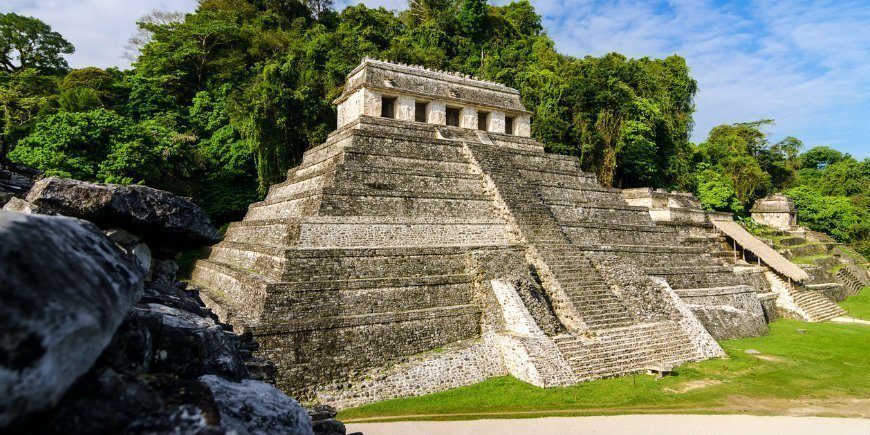
In Chiapas’ mountains, you will find one of Mexico’s biggest archaeological sites, Palenque, where you can see large, well-preserved Mayan ruins on the open squares. The special thing about Palenque is that you can get right up close and climb the pyramids, and you can even come inside some of the ruins and see old tombs in the narrow corridors.
Palenque has many fascinating buildings that have been thoroughly explored. The most iconic has to be The Temple of Inscriptions, which is the area’s tallest pyramid and burial monument built in honour of K’inich Janaab’ Pakal, the king of Palenque in the seventh century. A wealth of inscriptions has been found on and inside this pyramid, giving archaeologists a better understanding of the ancient Mayan communities.
Palenque is located in the lush jungle of the Chiapas Mountains, and we also highly recommend going to see the less-explored areas of the jungle. Here, you will find some of the smaller ruins still standing after Palenque’s heyday, and you will enjoy a more authentic experience of this impressive and historic area.
The jungle is also home to howler monkeys, which, particularly in the morning and evening, can be heard loudly claiming their territories. So do look up as you make your way through the jungle. The monkeys often sit right up at the top of the trees and are not shy about peeing down on people who get too close!
San Cristóbal de las Casas: Experience the traditional mountain town
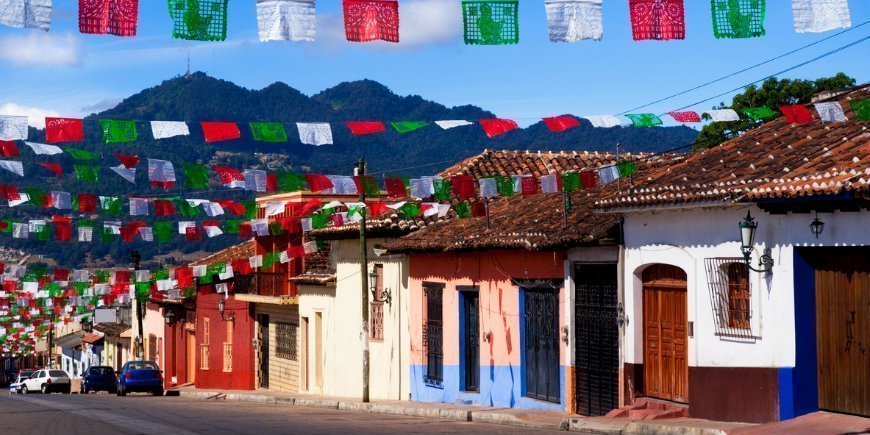
San Cristóbal de las Casas, or San Cris as this quaint mountain town is popularly known, lies in the Chiapas Mountains and offers a good blend of ancient Mexican traditions and modern living. Close to San Cris, you can visit the descendants of ancient Mayan Indians, who have retained much of their character and heritage to this day.
The town offers several cosy markets, where you can buy fresh fruit, handmade jewellery, clothes and bags, and it is really nice to sit down at one of the street cafés or restaurants and enjoy a cup of Mexican coffee or dinner while you soak in the atmosphere of the mountain town.
Located at an altitude of 2,200 AMSL, it can be tiring to go for long walks through all the town’s streets. But if you’re keen on exploring, we recommend that you visit the cathedral, which here is also called Templo de Santo Domingo, or the smaller church, Iglesio el Cerrito, which sits atop a hill. However, you will need fresh legs if you want to reach the top of the many steps, but you will be rewarded by the most beautiful view of the city. It’s totally worth it!
Mexico is a country with unique history, culture and nature, and offers experiences for every taste.
Come and see the impressive ruins, taste the fabulous Mexican food and explore the colourful streets of the towns and cities. You will return home with your suitcase packed with colourful experiences!
TourCompass
